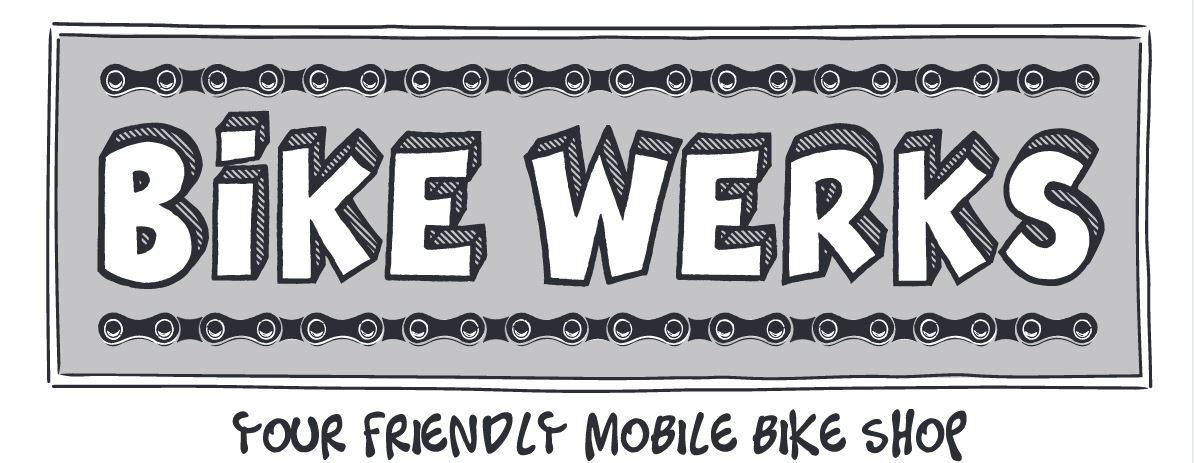Subsets of the Most Common Bikes: Hybrid, Mountain, Road
1. Hybrid
Websters definition of a hybrid is , “having or produced by a combination of two or more distinct elements”. In the case of a hybrid bicycle, those two elements are a mountain bike and a road bike. The prominent road elements are: thinner tires, light weight, 700c wheels, and the prominent mountain elements are: Flat bars, riding position, frame geometry and large gear range. The hybrid is suited for both asphalt and dirt or gravel paths.
- Rigid hybrid – fast, responsive, more suited for road
- Sport hybrid – front suspension fork & seat-post shock, Suited for road and offers more comfort for path or trail
- Comfort bike – upright, riser handlebars, soft saddle, suited for cruising rather than speed

2. Mountain
Though you can ride a mountain bike on the road, it’s true purpose is riding off road. Mountain bikes first appeared in bike shops in the early 80’s, and since then have evolved dramatically. In the mid to late 80’s, optional front suspension forks complemented the initial hard tail bikes. Soon to follow, various forms of rear suspension hit the scene. Mountain bikes have a more aggressive riding

position than hybrids. They have fatter tires and the riding position comparatively puts more weight on the shoulders and wrists. They have a wide range of gears for covering all types of terrain and the frames have lots of room for spinning muddy tires. Mountain bikes were the first type of bikes with disc brakes. Now disc brakes can be found on hybrid, road and mountain. I’ll get more into disc brakes in the “Brands” part of the blog post.
- Rigid – no suspension front or rear. Bike Werks has converted many old rigid mountain bikes to be more like hybrids by raising the bars and shortening the reach putting the body in a more upright position
- Hard Tail front suspension only
- Race (light weight, less fork travel (80-100 mm), thinner off- road tires)
- Trail (rugged, more fork travel (120-140 mm), wider tires, utilitarian)
- Fat bike (4” wide tires, rugged, lower gearing, utilitarian)
- Full suspension
- Race (lightweight, less F&R suspension travel (80-100 mm), thinner mountain tires, less aggressive tire tread)
- Enduro/Trail aggressive tire tread, lots of susp travel (120-160), long wheel base, utilitarian
- Downhill (laid back geometry, long wheel base, even more suspension travel F&R (180-200 mm – that’s over 7”!), wide tires with aggressive tire tread, super heavy duty – not suited for road or cross country
3. Road Bike
Like the other categories, road bikes have evolved over the years. With an emphasis on speed and covering long distances, they’re lighter weight, and fragile yet efficient. Traditionally having thinner tires (23 mm or thinner) over the years, road tires have gotten wider (28mm or more) and air pressure has come down (from 130 lbs to 100 lbs or less). The industry and enthusiasts find that the benefits of more rubber on the road, and deeper air cushion between the rim and the road outweigh the minor increase in wind resistance. The road category is responsible for the many frame materials available for whatever bike you choose. Steel, Aluminum, Carbon Fiber and Titanium frames all have their unique attributes in the form of price, weight and feel. Realize that a road bike puts the rider in a more aero position. One of the key differences in the subsets of road bikes is the position of the rider. Are you racing or are you riding as part of an exercise routine? Are you planning to ride hours at a time? Are you in a hilly area with lots of climbing?

- Sport/Endurance – more upright aero position, suited for long days in the saddle, emphasis on comfort and efficiency
- Aero/Race – aerodynamic frame construction, aggressive aero position, less is more (the lighter the bike, the more it costs), emphasis on speed
- Touring – wider range of gears, upright position, more emphasis on strong construction rather than weight, wider tires, mounts for fenders and saddle bag racks, emphasis on cruising and climbing
- Triathlon bike – most aggressive aero position equipped with aero bars lowering and stretching out the rider, gearing often changed by rider depending on terrain, lightweight, aerodynamic frame and wheels, built for speed at the expense of comfort
- Flat bar – light, nimble and fast like a traditional road bike, upright riding position like a hybrid, for road or asphalt paths, not dirt or gravel paths
- Gravel bike/Cyclocross – actually two categories, but very similar, attributes of a drop bar road bike, wide (35-40mm) tires with tread that grips, room within the frame and fork for mud coated tires, for trails, cross country and gravel, yet can function pretty well as a road bike when swapping out tires.
Other categories: Kids Bikes, balance bikes, single speeds, beach cruisers, tandems, recumbants, BMX, Adult tricycles and more.

